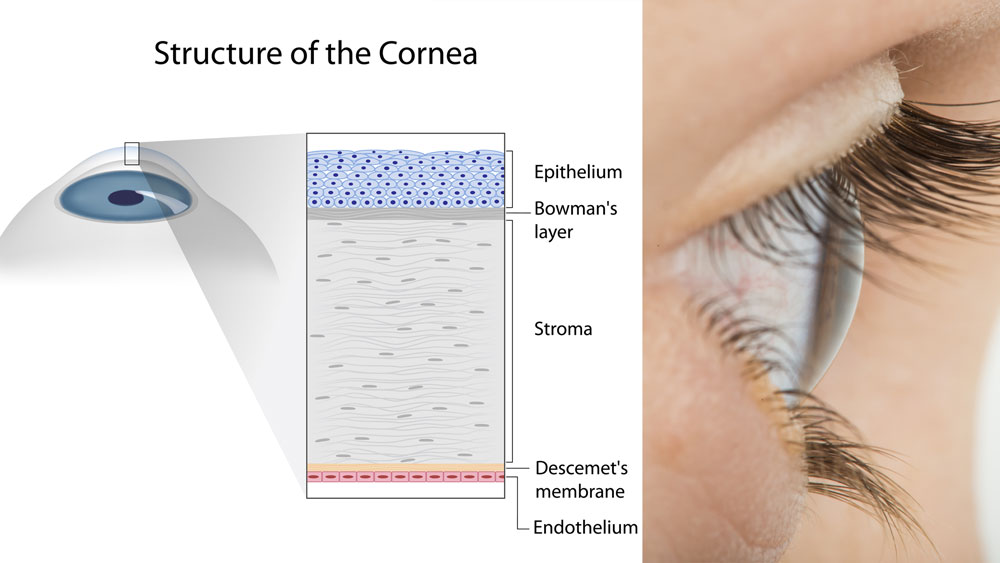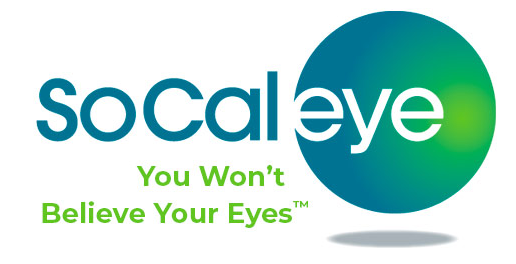
What is the Cornea?
The cornea is the clear window on the front of your eye. It’s made of tough, transparent tissue. Together with the sclera (white of your eye), the cornea helps protect your eye. It keeps out dirt, germs and other particles. The cornea also filters out some of the sun’s ultraviolet (UV) light.
The cornea plays a key role in vision. Its main job is to help your eyes focus. The cornea has a slight curvature. As light enters your eye, the shape of the cornea refracts (bends) it. The curve helps your eye focus on objects that are close or far away.
What is the Structure of the Cornea?
The cornea has five layers:
Epithelium: The epithelium is the outer layer of the cornea. It stops any material from entering the eye. It absorbs oxygen and nutrients from tears.
Bowman’s layer: This thin layer connects the epithelium and the stroma, the next layer.
Stroma: The thickest layer of the cornea is behind the epithelium. It’s made up of water and protein. The stroma is elastic (stretchy) but solid. The stroma gives the cornea its domed shape.
Descemet’s membrane: This thin layer separates the stroma from the endothelium.
Endothelium: This single layer of cells is between the stroma and the aqueous humor. The aqueous humor is the clear fluid in the front of your eye. The endothelium works as a pump that removes extra water that the stroma can’t absorb.
Common Conditions & Disorders of the Cornea.
Dry Eye Syndrome: Some people’s eyes don’t produce enough tears. Dry eye can cause discomfort and vision problems when the cornea is affected.
Keratitis: Keratitis can result from an infection or inflammation. Contact lenses are the most common cause of keratitis.
Scratches / Abrasions: Small corneal abrasions (scratches) or other corneal injuries typically heal by themselves. A deeper cornea scratch or eye injury can lead to scars or problems with your eyesight if you don’t get treatment.
Corneal Dystrophies: More than 20 diseases fall under corneal dystrophies. They can cause structural problems with the cornea. You experience cloudy vision the layers of the cornea are irregular or because material builds up on the cornea.
Examples of Common Corneal Dystrophies:
- Fuchs Dystrophy: A condition that causes corneal swelling and vision loss. This condition is caused by fluid leaking into the cornea as a result of weakened endothelial cells. The excess fluid causes the cornea to thicken, swell and become cloudy.
- Keratoconus: One of the most common corneal dystrophies in America. Keratoconus causes the cornea to become thin and bulge outward in a cone-like shape. This results in blurry, distorted vision that can worsen over time.
- Pterygium: Pterygium is a non-cancerous growth on the front surface of the eye and may be caused by UV light exposure, dust, wind, and dry eye. It can appear as a pink or red growth on the white part of the eye and may continue to grow toward the pupil. If this happens or begins to cause discomfort, it can be removed. New technologies use donor amniotic grafts and tissue glue which increase comfort and speed recovery time.
Cornea Treatments:
Medication: Most corneal conditions can be treated with prescription eye drops or oral medications (drugs you take by mouth).
Specialized Contact Lenses: For keratoconus, specialized contact lenses may help.
Treatment for more Advanced Corneal Conditions:
Laser Treatment: A laser treatment called phototherapeutic keratectomy (PTK) which can reshape the cornea.
Corneal Transplant: You may need a corneal transplant if your cornea has severe damage. You get a new cornea from a donor.
All treatment begins with a Consultation with a SoCal Eye Cornea Specialist in Long Beach. For Cornea Treatment in Long Beach, Schedule an Appointment today at LAKEWOOD (562) 531-2020 | LOS ALAMITOS (562) 598-7728 or send us an Online Consultation Request



